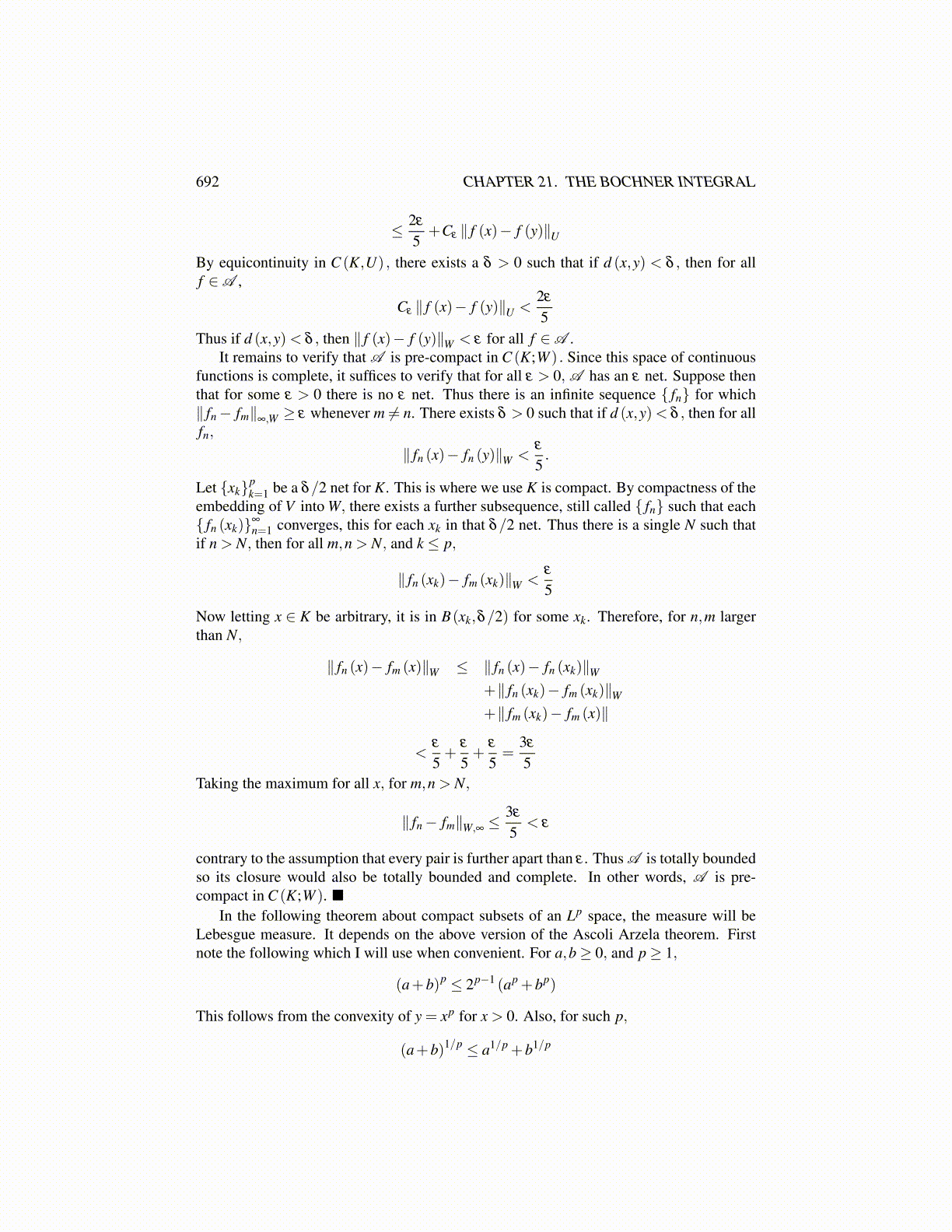
692 CHAPTER 21. THE BOCHNER INTEGRAL
≤ 2ε
5+Cε ∥ f (x)− f (y)∥U
By equicontinuity in C (K,U) , there exists a δ > 0 such that if d (x,y) < δ , then for allf ∈A ,
Cε ∥ f (x)− f (y)∥U <2ε
5Thus if d (x,y)< δ , then ∥ f (x)− f (y)∥W < ε for all f ∈A .
It remains to verify that A is pre-compact in C (K;W ) . Since this space of continuousfunctions is complete, it suffices to verify that for all ε > 0, A has an ε net. Suppose thenthat for some ε > 0 there is no ε net. Thus there is an infinite sequence { fn} for which∥ fn− fm∥∞,W ≥ ε whenever m ̸= n. There exists δ > 0 such that if d (x,y)< δ , then for allfn,
∥ fn (x)− fn (y)∥W <ε
5.
Let {xk}pk=1 be a δ/2 net for K. This is where we use K is compact. By compactness of the
embedding of V into W, there exists a further subsequence, still called { fn} such that each{ fn (xk)}∞
n=1 converges, this for each xk in that δ/2 net. Thus there is a single N such thatif n > N, then for all m,n > N, and k ≤ p,
∥ fn (xk)− fm (xk)∥W <ε
5
Now letting x ∈ K be arbitrary, it is in B(xk,δ/2) for some xk. Therefore, for n,m largerthan N,
∥ fn (x)− fm (x)∥W ≤ ∥ fn (x)− fn (xk)∥W+∥ fn (xk)− fm (xk)∥W+∥ fm (xk)− fm (x)∥
<ε
5+
ε
5+
ε
5=
3ε
5Taking the maximum for all x, for m,n > N,
∥ fn− fm∥W,∞ ≤3ε
5< ε
contrary to the assumption that every pair is further apart than ε . Thus A is totally boundedso its closure would also be totally bounded and complete. In other words, A is pre-compact in C (K;W ).
In the following theorem about compact subsets of an Lp space, the measure will beLebesgue measure. It depends on the above version of the Ascoli Arzela theorem. Firstnote the following which I will use when convenient. For a,b≥ 0, and p≥ 1,
(a+b)p ≤ 2p−1 (ap +bp)
This follows from the convexity of y = xp for x > 0. Also, for such p,
(a+b)1/p ≤ a1/p +b1/p